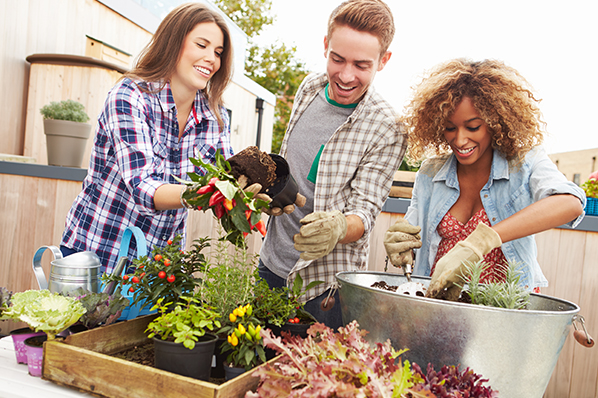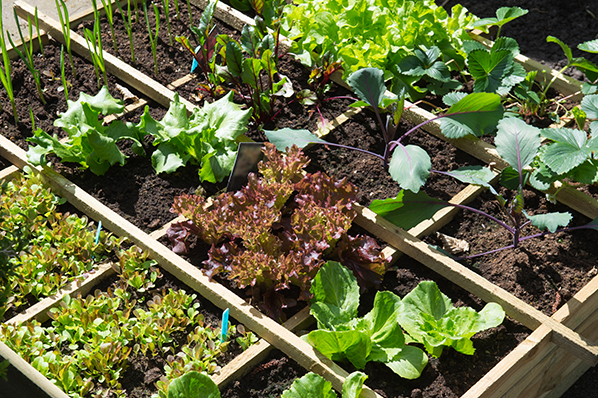 If the goal of sustainable food is to cut out as many “layers” between you and your food, then clearly having a home garden is the ultimate sustainable food process. “Wait,” you quip, “I don’t have fields of acres to grow a garden.” Guess what? You don’t need fields of acres to grow a garden. If you live smack dab in the middle of the city, then you’ll have no trouble getting your garden growing especially if you can plug into the urban garden movement.
If the goal of sustainable food is to cut out as many “layers” between you and your food, then clearly having a home garden is the ultimate sustainable food process. “Wait,” you quip, “I don’t have fields of acres to grow a garden.” Guess what? You don’t need fields of acres to grow a garden. If you live smack dab in the middle of the city, then you’ll have no trouble getting your garden growing especially if you can plug into the urban garden movement.
Pick Your Perfect Produce
Here are the basics of starting your garden: Seeds, sun, water, and soil. With some hydroponic hanging plants, you don’t even need the soil. The first consideration is to decide what you want to grow. Think about what you would put into a salad. Lettuce, tomatoes, cucumbers, and peppers are a good start. Remember that certain plants like tomatoes and peppers will continue to grow throughout the summer. It’s like a never-ending veggie loop. Other items like carrots, corn or radishes pop up just once per season.
There is also a wide variety of herbs that can be planted alongside your veggies. These can be used in all your cooking. Basil, rosemary, thyme, and oregano are the easy herbs to get blooming.
 The Space
The Space
If you have a dirt backyard, then you’re halfway home. What you should do is section off your garden with some wood planks. You might discover that rabbits and other critters like their veggies too. You can easily stake out some mesh netting to keep the beasties at bay. We’re not talking about a lot of space. A 10′ x 10′ is really all you need. No dirt in your backyard? Not a problem. Container gardening is the way to go. You can pretty much use any containers from the fancy ones you would get at the nursery to a plastic tub you’d buy at Wal-Mart. Before pouring in your dirt, you’ll want to poke a few holes in the bottom of the container to let the water flow. These containers are perfect for balconies or patios.
Your plants will thrive in 6 to 8 hours of direct sunlight. If your area doesn’t have that much sun, then go for the leafy veggies. You should also situate your garden near a source of water. If you’ve got a hose that will reach the space, all the better. Don’t depend on rain to take care of watering. The directions on every seed pack will tell you just how much your plants need to drink.
The Dirty Truth
As for soil, with containers, you get to control the dirt so it won’t be a problem. However, out in the backyard, you might have to nurse your soil a bit especially if you’ve never grown out there. If you’re growing on what used to be a patch of grass, then you’ll be off to a good start because you know that area is somewhat fertile. Any garden will benefit from added nutrients. These can be found in bags of topsoil, compost or peat moss.
Once your garden is planted, you’ve got to step up the TLC. This is the fun part. As you water the plants, check in for weeds and bug infestation. There are plenty of non-toxic recipes you can use to keep the bugs off your plants. You’ll want to use a little hoe to keep turning your soil. That will keep the weeds at bay. Finally, don’t be stingy with the fertilizer. Again, you can pick this up at any nursery or Home Depot type of store. Growing your own compost is always a good way to go. Are you ready to get your garden growing?

